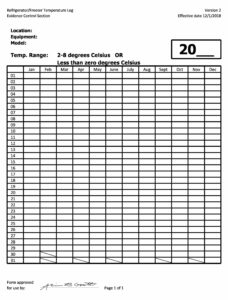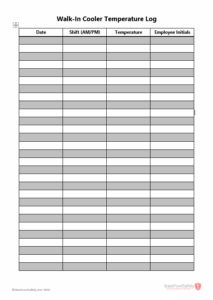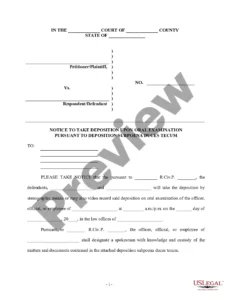Keeping your food safe and fresh is a top priority, whether you are managing a busy commercial kitchen or simply looking after your family’s groceries at home. One of the most critical aspects of food preservation is maintaining the correct temperature in your fridge and freezer. Fluctuations can lead to food spoilage, wasted money, and even potential health risks.
That is where a reliable system for monitoring comes into play. Regularly checking and recording these temperatures provides peace of mind and ensures everything is operating as it should. A well-designed fridge freezer temperature log template can make this essential task incredibly simple and efficient, transforming a potentially tedious chore into a straightforward routine.
Why Monitoring Your Fridge and Freezer Temperature is Crucial
Understanding why consistent temperature monitoring is non-negotiable is the first step towards better food safety practices. Incorrect temperatures, particularly in a refrigerator, create an ideal breeding ground for harmful bacteria like Salmonella and E. coli. These microscopic invaders can multiply rapidly within what is often referred to as the “danger zone,” which spans temperatures between 4 degrees Celsius and 60 degrees Celsius (40 degrees Fahrenheit to 140 degrees Fahrenheit). Food left in this range for too long can become unsafe to consume, even if it looks and smells perfectly fine.
Beyond the immediate health implications, proper temperature management has significant economic benefits. Think about all the food that might spoil prematurely because your fridge is running a few degrees too warm, or your freezer is not quite cold enough. This spoilage translates directly into wasted money, not just from the spoiled items themselves but also from the energy used to try and keep them cool ineffectively. A little effort in monitoring can lead to substantial savings over time, both in terms of groceries and electricity bills.
For businesses, especially those in the food service, healthcare, or pharmaceutical industries, temperature logging is not just a recommendation; it is often a legal requirement. Regulatory bodies enforce strict guidelines to prevent widespread foodborne illnesses and ensure product integrity. Maintaining an accurate and readily available temperature log demonstrates due diligence and compliance, protecting both your customers and your business from legal repercussions and reputational damage. An official fridge freezer temperature log template is an indispensable tool in meeting these stringent standards.
Consistent temperature readings also help you identify potential issues with your appliance before they escalate into major breakdowns. A fridge that is consistently running warm might indicate a failing seal, a blocked vent, or a compressor nearing the end of its life. Catching these problems early can allow for timely maintenance or repair, extending the lifespan of your appliance and preventing the costly sudden loss of an entire fridge or freezer full of perishable goods.
Ultimately, regular temperature logging fosters a culture of safety and care. It makes individuals more aware of their responsibilities regarding food storage and encourages proactive measures rather than reactive responses to problems. This consistent oversight is a simple yet powerful safeguard that underpins the entire food preservation process.
Understanding Ideal Temperatures for Food Safety
- For refrigerators, the internal temperature should ideally be maintained between 0 degrees Celsius and 4 degrees Celsius (32 degrees Fahrenheit to 40 degrees Fahrenheit).
- For freezers, the temperature should be at -18 degrees Celsius (0 degrees Fahrenheit) or colder to effectively halt bacterial growth and maintain food quality over long periods.
- Always place your thermometer in the warmest part of the fridge for an accurate reading, typically near the door or towards the top shelves. For freezers, aim for the middle.
Creating and Using Your Fridge Freezer Temperature Log Template Effectively
Developing an effective temperature log template does not need to be complicated. The key is to create a system that is easy to understand, simple to use, and provides all the necessary information at a glance. A good template should remove any guesswork from the process, encouraging consistent and accurate data collection. It serves as a visual record, helping you spot trends or anomalies quickly, allowing for prompt action when temperatures deviate from the safe zone.
When designing or choosing your template, consider what essential information you will need to record every time. Beyond just the temperature, other details provide crucial context. For instance, knowing who took the reading can be important for accountability, especially in a professional setting. The specific date and time help establish a timeline, useful for tracking performance over days, weeks, or months. Any observations or actions taken are also vital, such as “adjusted thermostat” or “discarded spoiled items.”
Here are the fundamental elements your fridge freezer temperature log template should include:
- Date the reading was taken
- Time the reading was taken
- Specific location of the appliance (e.g., “Main Kitchen Fridge 1,” “Utility Room Freezer”)
- Temperature reading in Celsius and/or Fahrenheit
- Initials or name of the person who took the reading
- Space for notes or corrective actions (e.g., “adjusted setting,” “checked door seal”)
Once you have your template ready, consistency is paramount. Assign specific times each day for checking temperatures, ideally twice daily, once in the morning and once in the evening, especially for commercial use. Ensure your thermometer is accurate and calibrated regularly. If you find a temperature outside the safe range, record it immediately and take corrective action, such as adjusting the thermostat or investigating the cause. Document these actions in the notes section of your log.
Regular review of your completed log sheets can provide valuable insights. Over time, you might notice patterns, such as your fridge always running slightly warmer on particularly hot days, or your freezer showing a slight increase in temperature before a defrost cycle. These insights can help you optimize your appliance usage, schedule maintenance more effectively, and prevent potential problems before they become critical, thereby ensuring continuous food safety and operational efficiency.
Implementing a routine for temperature monitoring using a dedicated log template transforms a reactive approach into a proactive one. It empowers you with the data needed to maintain optimal conditions for your stored food items, reducing waste and ensuring health standards are consistently met. This simple yet powerful tool is an essential component of any robust food safety management system.
By regularly recording and reviewing your fridge and freezer temperatures, you are actively protecting your food, your health, and your budget. It fosters a disciplined approach to food storage that pays dividends in safety, efficiency, and peace of mind. Embrace this straightforward practice and elevate your food preservation standards.


